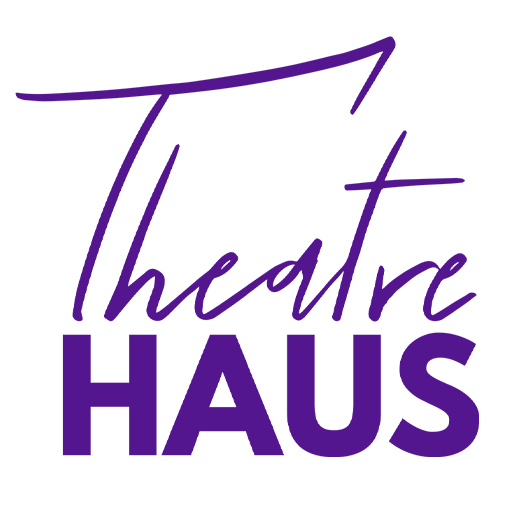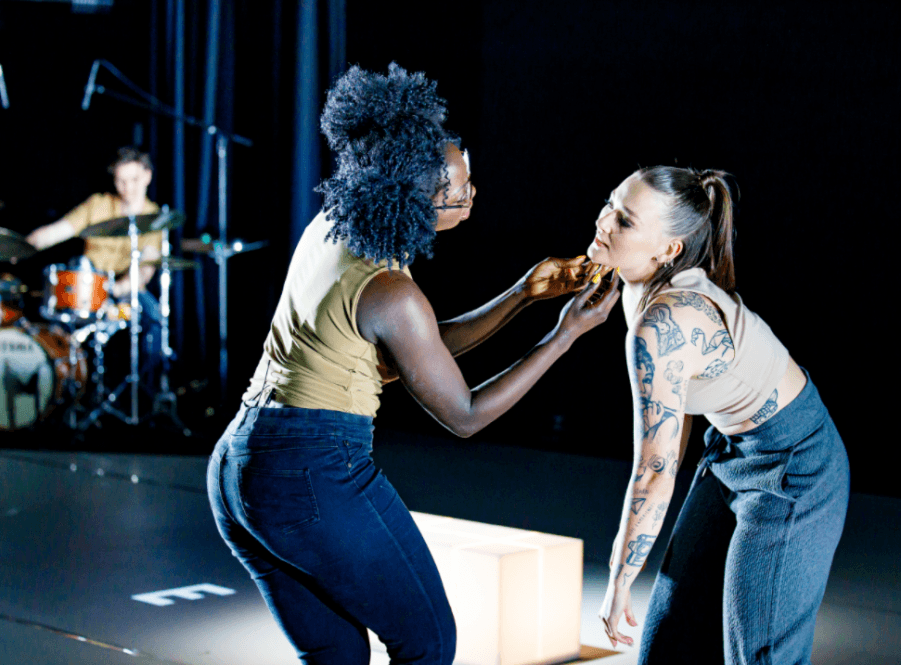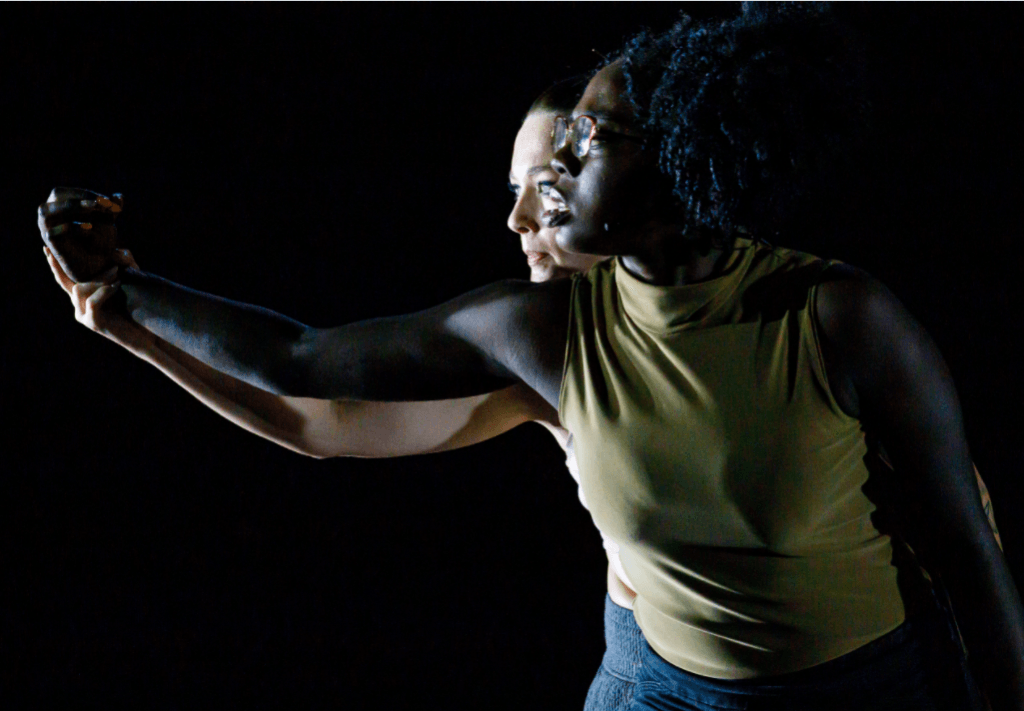
‘How To Spell Love’ // Metro Arts and Brisbane Festival
‘How To Spell Love’ was visceral.
A collection of intensely personal stories on what it’s like to grow up in Queensland as a black person – and a black woman – ‘How to Spell Love’ was at its strongest when the spotlight was on the spoken word poetry of 22-year-old Anisa Nandaula.
“I would rather die than date a black girl,” wrote a teenage boy on a photo of Nandaula that circulated around school, she told the audience.
“They’re disgusting.”
The New Benner Theatre had a distinctly New York feel Thursday night, with only a neon sign that read ‘Make Meaning’ to light the way as the audience was ushered downstairs to the stage. Percussionist Benjamin Shannon was already drumming, building to an unsettling, nails-on-a-chalkboard sound as the (mostly white) audience of about 35 took their socially distanced seats in anticipation.
The set design was minimal; a black backdrop, white stage floor and four white blocks that lit up to a soft glow. Lighting tricks were used sparingly throughout by visual designer Freddy Komp, except for a sequence of flashing lights that, presumably intentionally, had a startling effect as Nandaula leapt across the stage.
“The world is a crossword puzzle.”
‘Absence’ was the first word I noticed that was projected onto the stage floor after the lights came up on Nandaula and dancer Pru Wilson. This initial duet was powerful and captivating: at times helping each other and moving together, at times violently opposed. Wilson’s stage presence and contemporary dance talent shone through Nerida Matthaei’s choreography; allowing Nandaula’s emotional experiences to be demonstrated physically.
“Consumption, currency, commodify, objectify…belong…”
Shannon’s drumming, largely improvised, worked well to augment the power of Nandaula’s words and very rarely overpowered the poet’s voice. The variety of percussive instruments used, and the talent and intensity with which he used them, was highlighted in a sequence when one was played so fiercely, part of it broke off and rolled into the audience. No one broke concentration, and instead, it seemed to add to the raw physical energy each put into the performance.
I enjoyed the sound design choices when Shannon was not at his drum set (particularly the piano and electronic music) but wondered about the choice to bring him on stage and incorporate him in some background movement with Wilson. For me, given the show was so much about distinct identities, each performer shone brightest when used in their respective genres—Wilson to embody the power of the words; Shannon to punctuate poetry and set a rhythm for the dance; Nandaula to confront the audience with her similes, metaphors and powerful assertions.
“There is always someone who is guilty; if it is not you, or you, or you…it is me.”
Though the performers’ movement may have been purposely contained to symbolise the themes of oppression and constraint, there may be an opportunity to experiment with the use of space; my vantage point on the mezzanine level made me notice how much of the show was contained to stage right. Nandaula’s one giant leap across the floor—punctuated by the re-entry of Shannon’s drums—was a reminder of the power and energy that can be conveyed by taking up as much space as possible with one’s body.
The word I wrote down repeatedly in my notes to describe ‘How to Spell Love’ was visceral. In speaking with Nandaula after the show, she described why Wilson and Shannon were incorporated to help express her personal anecdotes.
“When I was thinking about these experiences, they were very, very physical. They were emotional, but they were very physical,” she said. “I have this thing where when I get scared or fearful, I can’t stop shaking; all of that was a physical experience and I thought it would be better to showcase that in a dancer. And Benjamin has really cool drumming and it …accentuated the experience.”
While the initial 2019 version of ‘How to Spell Love’ performed at the Judith Wright Centre was entirely improvised (other than the poetry), Nandaula credits her director with further developing the performance.
“Spoken word poetry has this rhythm… but you can’t do that for 40 minutes. We got Margi (Brown Ash)…and she helped me go from just spoken word poetry to acting, which changed the whole feel of it.”
Despite the addition of choreography and a transition to acting, the performance felt raw and authentic. The audience was captivated throughout and rewarded the three young performers with whistles and cheers at the end of opening night.
And what did the audience take from the show? Nandaula hopes it was a lesson in privilege and complicity.
“Whether that be white privilege, gender privilege, sexual privilege; you are complicit in the oppression of someone else and you are complicit in their suffering. And that’s a horrible feeling but it’s also empowering to know that as you are complicit, you are also capable of change.
“And in the same way you’re complicit in the suffering of other people and there’s potential to be better, often we are complicit in our own suffering.
“We act as though we’re passive, backseat drivers in the car of suffering, but often we’re the ones sitting in the wheel and we have the power to stop the car and say, ‘Enough is enough’ for ourselves—and the world.”
‘How to Spell Love’ performs at the New Benner Theatre, Metro Arts, until Sunday, 20 September 2020. While tickets have sold out, more information on upcoming shows is available on Metro Arts website. To follow and learn more about Anisa Nandaula, visit her website.
Photography by Creative Futures Photography.









